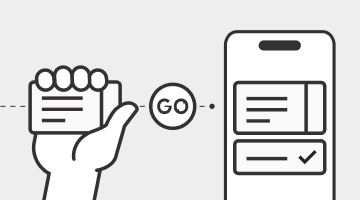A recent statement from OpenAI CEO Sam Altman warned of an impending “fraud crisis” fueled by the increasing sophistication of AI-powered impersonation. With voice cloning, synthetic identities and deepfake content becoming more convincing, the challenge of distinguishing real from fake is growing rapidly.
This is a moment to take digital trust seriously. Not with panic, but with purpose. And that starts with strengthening the foundations of how identity is represented, verified, and relied upon digitally.
The growing risk of AI-facilitated fraud
Altman’s warning is not hypothetical. AI can already mimic speech patterns, generate realistic images and documents, and even pass some biometric verification systems. This raises difficult questions for identity and access management, particularly in sectors like finance, government services and travel, where impersonation can lead to significant harm.
Traditional approaches to identity verification, such as uploading scans of physical IDs or relying on passwords and PINs, are increasingly susceptible to AI-powered attacks. These methods rely heavily on static, replicable data and weak assurance models. And in a world of cheap and abundant synthetic content, static credentials alone aren’t enough.
Why digital credentials change this
Digital credentials, such as mDLs (mobile Driver's Licenses) and other mDocs provisioned to user devices, provide a stronger model for trust that is more resistant to impersonation attacks:
- Digitally signed and issued: mDocs are cryptographically signed by a trusted issuer. This signature can be independently verified at the time of presentation, meaning their authenticity can’t be faked or tampered with like a photocopy of a physical ID.
- Bound to the user and their device: mDocs are provisioned directly to a person’s device and require secure, often biometric authentication to be released. This makes it significantly harder for AI-driven systems, no matter how sophisticated, to impersonate the rightful holder.
A more trustworthy future, built on verifiability
We believe the solution isn’t to outpace AI fraud with more AI detection alone. It’s to build systems that start from a stronger position of trust and verification. Digital credentials, anchored in open standards and governed ecosystems, offer exactly that: a model where every credential is issued by a trusted party, held securely by the user, and presented in a way that’s cryptographically verifiable.
This isn’t about claiming to prevent fraud. No system is fraud-proof. It’s about mitigating risk in meaningful, practical ways that scale with the challenge. Like a water-resistant jacket in a downpour, mDocs won’t stop every drop, but they’ll keep people a lot drier than what we’re using today.
The path forward
As AI reshapes our digital landscape, trust infrastructure becomes a strategic necessity. For public agencies, financial institutions and digital service providers, adopting stronger digital credentials is a pragmatic step toward resilience.
At MATTR, we’re focused on enabling this shift, not by locking ecosystems down but by making them smarter, safer, and more interoperable. Our solutions integrate seamlessly into existing systems, giving organizations a way to elevate assurance without adding friction.
Let’s build a future where digital trust holds up, even when the rain comes.







